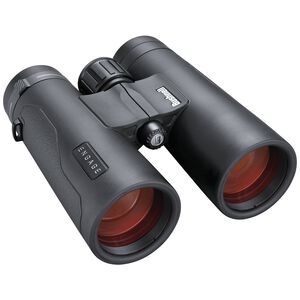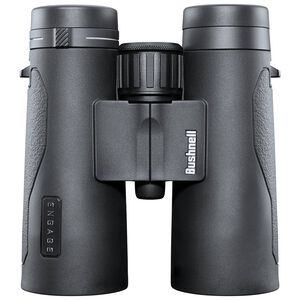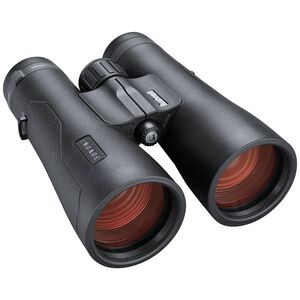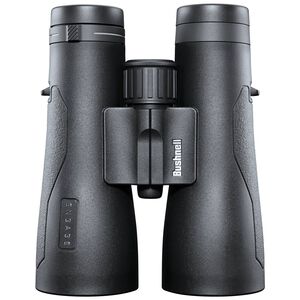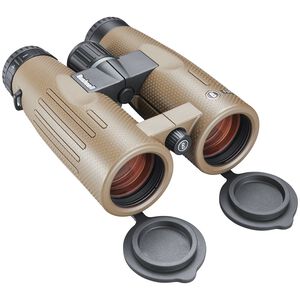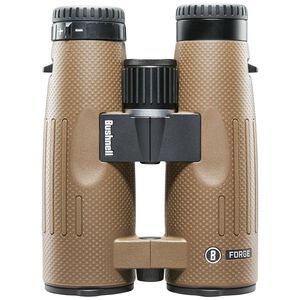To hunt safely you must be able to see not only what you are shooting at, but what is in front of it and what is behind it.
Sound familiar? It should. It’s high on the list of the Ten Commandments of Firearms Safety.
The Commandment extends further to knowing the identifying features of the game you hunt, so you are 100-percent sure that game animal is the one you want to shoot.
The point is this: You need to have a clear view of the animal and its surroundings before you squeeze the trigger.
And for me, when it comes to big game hunting, that means using quality optics. To me, the saying “Don’t leave home without it” applies to what I consider my ultimate glassing set-up, which when I’m rifle hunting, includes a riflescope, binocular, rangefinder, and spotting scope. (For bowhunting, omit the riflescope.)
Let’s talk about each in order, starting from when farthest from the animal to when closest. Let’s say I’m hunting deer, white-tailed deer, since they are universally hunted across much of the U.S. I’ve hunted with guides who start their hunt by climbing to the highest point in the area where they’ll sit for hours glassing near and far with high-magnification optics. This is where my spotting scope comes in.
With a spotting scope I can not only find far-off game animals, but I can also get a rough idea if that particular buck is one I want to hunt. I may not be able to pick out fine detail of its antlers from a half-mile or more away, but I can usually judge if it deserves a closer look.
I’ve saved countless miles of walking this way, by avoiding stalking smaller animals and only going after that big buck lurking in a canyon far away. The spotting scope is also handy as I get closer so I can really judge the size of the buck and its antlers. I also count other animals, if any, that may be with the buck. I want to keep track of the whole herd because if one animal, say a cautious doe, sees or smells you, you’re busted. My spotting scope lets me scout from a safe distance.
As I move in, my binocular comes into play.
Vic Ziliani of Bushnell, who knows a lot about optics, says binoculars are probably the most important part of an ultimate glassing kit.
“Binoculars are a solid piece of gear and if your budget allows, everyone should have a set,” Ziliani said. “In some areas of the country, they’re probably more important than a riflescope.”
I agree. This is my go-to optic, whether I’m in a blind or stand or spot-and-stalk hunting. I always have them handy to not only find and judge game animals, but to evaluate terrain for obstacles and to develop a plan of approach. With my binoculars I make the final call on whether to take the shot or not. Keeping the Commandment in mind, I judge the deer and scan in front of it and behind it to make sure nothing is in harm’s way and that there is a safe backstop to stop my bullet in case I miss or it passes through the animal.
Next, my rangefinder comes into play. I keep it in my hunting vest’s handiest pocket, ready to deploy quickly and with minimal movement. I take a quick reading of the range to the animal, which helps me determine if I’m comfortable taking the shot or if I need to work closer.
Let’s say I’m a bit farther than I’m comfortable taking the shot. Back to binoculars to determine a safe, slow approach until, using the rangefinder again, I determine I’m within a comfortable shooting distance.
Now, up comes my rifle with the variable-power scope set at a pre-determined magnification—low magnification if the animal is close, higher as the distance increases. I want a clear, crisp view through my scope, a view of the animal, any surrounding animals, and again check in front of and behind the target animal.
I know the distance; I know this is the animal I want to take; I know there is a safe backstop and no other animals or obstacles in front or behind it.
I settle the crosshairs and squeeze the trigger—and in that instant my ultimate glassing set-up pays off.
Now, what I use in my optics set-up may not be what would work best for you. Ziliani spelled it out simply. “What you use to hunt whitetails in Nebraska is going to differ from what I use in the Adirondack Mountains of New York,” he said.
Since there are optics best suited for wide-open hunting country and optics best suited for more wooded or otherwise closer-quarters hunting, plus different types of hunting (recommendations for deer hunting differ from turkey hunting, for instance), I asked Ziliani where would be the best place for someone to start to put together their ultimate glassing set-up.
Simple, he said. “We have an optics buyer’s guide to help all consumers find what they need for their application.”
I checked them out and he’s right, these guides are comprehensive and will lead you to the right optics for your activities. They cover riflescopes (https://www.bushnell.com/buyers-guide/riflescope/), binoculars (https://www.bushnell.com/binocular-finder/), rangefinders (https://www.bushnell.com/products/rangefinders/), and spotting scopes (https://www.bushnell.com/products/spotting-scopes/).
JOE ARTERBURN
A journalist by profession and hunter by inherent inclination, Joe Arterburn has more than 35 years of experience as a writer and in the outdoor industry. He is a freelance writer for major outdoor publications, including Petersen’s Hunting, Outdoor Life, Hunter’s Handbook, Gun Digest and Gun Dog, as well as online publications.
This article was originally published for the International Hunter Education Association (IHEA). Bushnell is a proud sponsor of the IHEA and continuing the heritage of hunting worldwide by developing safe, responsible, knowledgeable and involved hunters.

